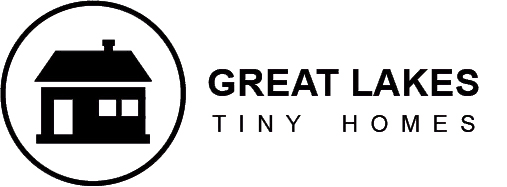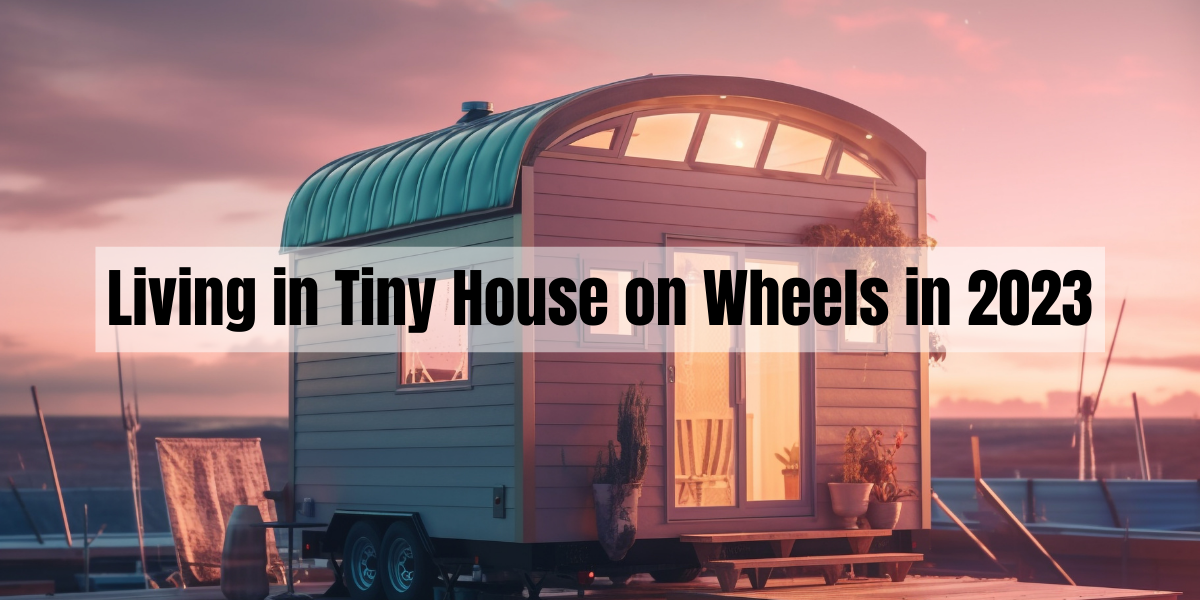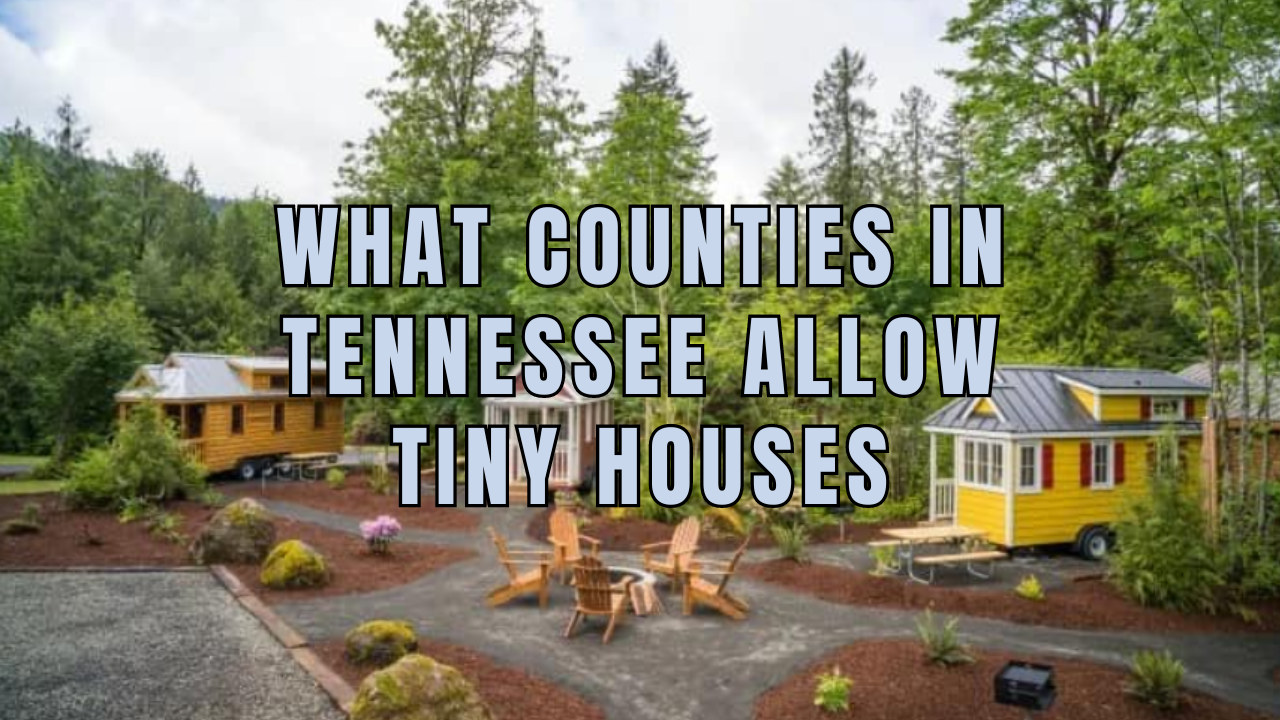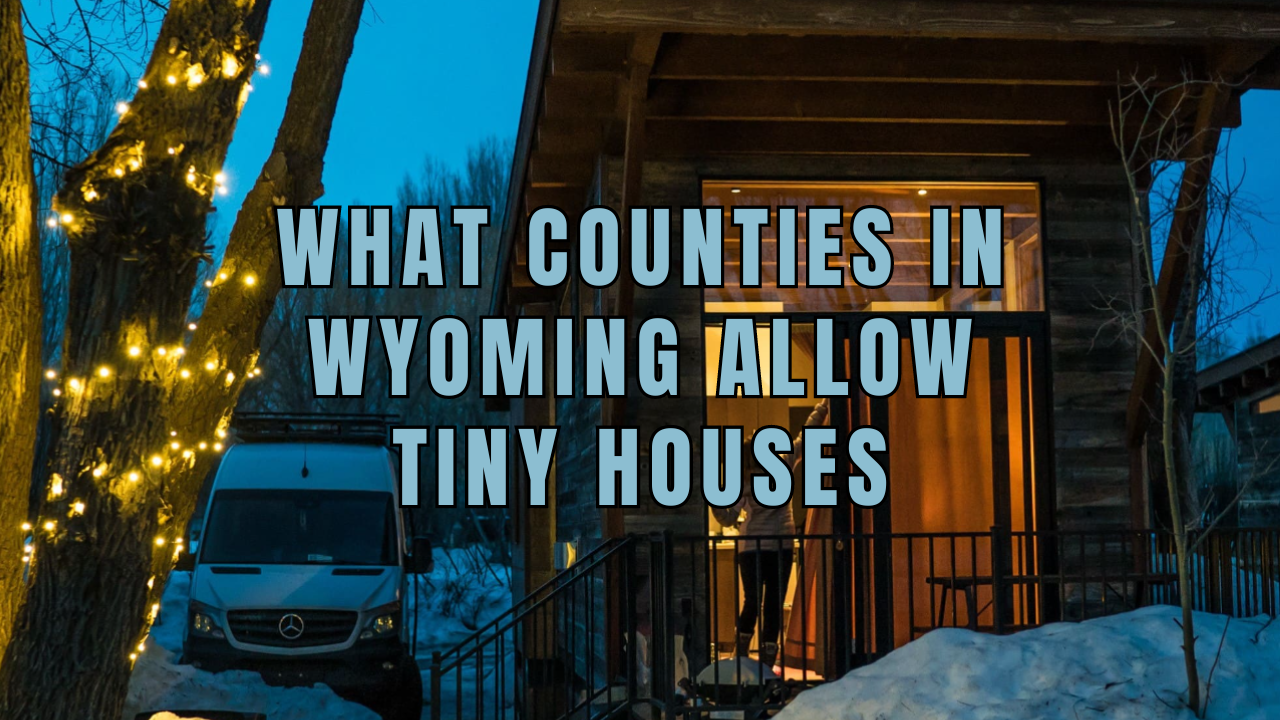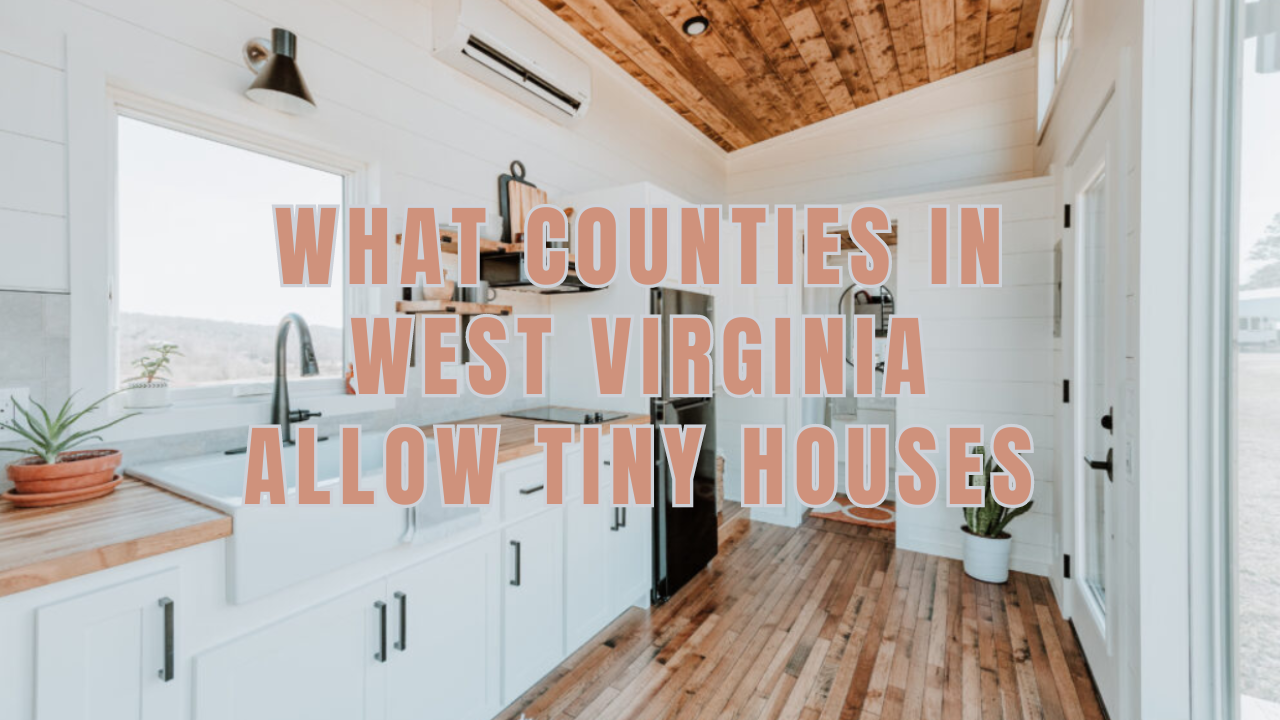Tiny House on Wheels is a unique architectural movement that reflects the shifting housing industry. Living in a tiny house depends on the person’s priorities, way of life, and openness to change. These tiny homes provide an alternative to traditional houses due to their mobility and simplicity. Many people who want to live more simply and sustainably are drawn to these little homes for various reasons, including their low initial cost, low carbon footprint, and the opportunity for customization they provide. We will explore everything you need about living in these compact yet innovative homes.
What Are Tiny Houses on Wheels?
The term “tiny home on wheels” (THOW) refers to a small, transportable home that combines the mobility of a trailer with the simple lifestyle of tiny living. These skillfully constructed lofts, which emphasize usefulness, efficiency, and sustainable living, typically range from 100 to 400 square feet. Utilizing a THOW made for camping or occasional living may be less expensive than one made for year-round use. The movement became more well-known in response to rising worries about the cost of housing, the environment, and the need for a simpler way of life.
Homeowners of tiny houses on wheels can move, discover new locations, and change their living arrangements as needed without sacrificing comfort. Despite being relatively small, these tiny homes can accommodate a kitchen, bathroom, living space, and sleeping quarters using multi-functional furniture and space-saving strategies. The tiny house on wheels is more than just a home; it is a deliberate decision to live and value versatility and adaptability. These tiny homes have evolved into a representation of a more sustainable and contented way of life by fostering innovative thinking and a closer relationship with nature.
Advantages and Disadvantages of the Tiny House on Wheels
Advantages
- Mobility – Moving and relocating your tiny home is simple, allowing you to discover new areas or relocate closer to loved ones or your place of work.
- Sustainability – They leave a smaller carbon footprint and encourage eco-friendly behavior by using less energy and resources.
- Customization – Many tiny houses can be designed and built to meet your requirements and choices.
- Low-budget – Housing can be affordable compared to a regular home, saving thousands of dollars in lease or mortgage payments. Due to their lower building and maintenance costs, tiny mobile homes are sometimes more economical than conventional homes.
- Modest Life – Embracing a minimalist lifestyle, tiny homes promote organizing and emphasizing what is most important.
Disadvantages
- Zoning Restrictions – Some locations have firm zoning regulations that may restrict where you can park or keep a mobile tiny home.
- Utilities – Depending on the area and infrastructure, it may be difficult to access water, sewage, and electrical power.
- Building Codes – Complying with safety and building rules may be challenging, depending on the jurisdiction.
- Resale Value – Tiny houses on wheels may only have a small market, which could lower their potential selling price.
- Compact Size – For people used to greater living spaces or staying in traditional houses, being in a tiny home living may feel constrictive.
The Tiny House Movement
The tiny house movement is an architectural trend that promotes downsizing to simpler, more affordable homes. It emerged in response to people’s increasing concerns about the cost of living, the environment, and the desire to live a more meaningful life. The trend gained popularity in the latter half of the 20th and the first decade of the 21st century, when many people consciously decided to downsize their homes to less than 400 square feet. Multipurpose types of furniture and innovative storage solutions are common in tiny homes because of the emphasis on efficiency.
They advocate for a more minimalist lifestyle, emphasizing experiences above material belongings and reducing one’s material footprint. The movement’s goals range from lessening one’s impact on the environment to securing one’s financial independence and expanding one’s range of movement. Tiny houses are sometimes constructed on trailers so their owners may move easily, take them on the road, or relocate to a more rural area. The small house movement is a celebration of people making a deliberate choice to downsize their homes in favor of a more sustainable and fulfilling way of life.
Building a Tiny House on Wheels
Frame Builder Base Construction Materials
- Trailer
- Lumber
- Siding
- Asphalt Shingle Roofing
- Repurposed Frame Structure
- Windows and Doors
- Fiberglass Proper Insulation
Low-Cost Utilities
- Solar Panels
- Fresh Water Tank
- Water Pump
- Grey Water Pump
- Propane Tankless Water Heater
- Air Conditioning
- Electric Heating
Interior Building Materials
- Plywood Interior Siding
- Laminate Flooring
- Light Fixtures
- Cabinets and Countertops
Appliances in the Tiny House on Wheels
- Refrigerator
- Stovetop
- Kitchen Sink
- Composting Toilet
- Shower
- Washer-Dryer
- Other Smaller Appliances
Best Tiny Home Builders in 2023
Most Cost-Effective: Rocky Mountain Tiny Houses
Since Rocky Mountain Tiny Houses provide fully customized tiny houses beginning at roughly $30,000, the company is the most cost-effective small home on wheels for sale. Features include a loft, closets, kitchen, dining area, living room, laundry room, a set of stairs, solar panels, ceiling fans, a tub, and a shower.
Most Luxurious: New Frontier Tiny Homes
New Frontier is a luxury tiny home manufacturer and designer, and their five available models can comfortably accommodate anywhere from two to six people. Prices for the base models range from $119,000 to $229,000, but purchasers can make unlimited changes to the design thanks to the helpful staff. Escher, the largest model the high-end builder offers, features two bedrooms, a walk-in closet, and a kitchen fit for a master chef. In addition, the open layout is perfect for hosting gatherings of all sizes. At a starting price of $119,900, Luna, New Frontier’s entry-level offering, boasts a lofted king bed, full-sized shower, full kitchen, and expansive glass window wall.
The exteriors and interiors of New Frontier Tiny Homes’ luxury tiny houses are unlike anything else on the market, which is why they are the greatest constructor in the industry. Features such as a glass wall of windows, a garage door, a loft for extra storage, a fully equipped kitchen, a dining area, a living room, a full bathroom with a washer and dryer, a stairwell, ceiling fans, a walk-in closet, and a shower or bathtub.
Best in Customization: Tumbleweed Tiny House Company
You can either explore their building designs to construct a home from scratch, or they offer a special feature that allows you to choose from various interior and exterior design options. Tumbleweed Tiny House Company is known for its stunning and eco-friendly tiny homes for sale. Tumbleweed stands out from the crowd not just because it uses eco-friendly materials but also because it allows consumers to tailor their purchases to their own needs.
This do-it-yourself approach can save buyers money compared to commissioning a tiny house build, and it also provides buyers more control over the design of their dwelling. Tumbleweed also offers additional outside finishing to their customers, such as a finished metal roof, installed windows, and more. Each is outfitted with a cozy sleeping loft and an insulated floor below. Tumbleweed can create a breaker box and wiring, an on-demand water heater, and more plumbing if you feel you need more confidence doing it yourself.
Frequently Asked Questions
What Is the Difference between a Tiny House and a Micro House?
A tiny house and a micro house are mainly differentiated by size and function. A tiny house is a standard dwelling on a smaller scale that often has more facilities and is between 100 and 400 square feet. It is intended to provide comfort and practicality while creating a simple yet sustainable living experience. A micro house, on the other hand, is considerably smaller, typically covering at most 80 square feet. Extreme simplicity and portability are its top priorities, and it frequently functions as a temporary or transportable shelter, such as a mobile cabin. Micro homes are perfect for people seeking a highly compact and basic lifestyle because they concentrate on the most essential needs.
What Wheel Size Can I Have on a Tiny House?
The weight of the tiny house and the kind of trailer or frame being utilized are two considerations that affect the wheel size that can be used on a tiny house. Typically, tiny homes on wheels are built on trailer steel frames or have their unique chassis, and the load-bearing capacity and stability requirements are used to decide the wheel size. Tiny homes frequently use trailer wheels with 14 to 16 inches diameter. However, some larger small homes or specially-made trailers may have wheels that are 18 or 20 inches in diameter. It’s crucial to ensure the tires are rated suitably for the amount of stuff they will carry and that the chosen wheel size can sustain the weight of the tiny house. To ensure safety and adherence to local laws, it is advised to speak with a qualified builder or engineer before deciding on a certain wheel size. When a tiny house is finished, you must hire an expert contractor to bring it to the chosen area.
Can You Put a Tiny House on Wheels Inside Your Property?
According to the state, if you have the required space and adhere to local zoning laws, construction requirements, and building codes, you can put and live in a tiny house on wheels inside your property in states where they are permitted. There are several benefits to having a tiny house on wheels on your property, including flexibility and mobility. You can move the little house as needed, turn it into extra living space for visitors, or use it as a temporary residence while constructing a permanent house. However, before placing a tiny house on wheels on your land, you must check local laws and homeowners’ association guidelines and secure any necessary licenses.
Wrap-Up
In 2023, many individuals and families are finding that life in a tiny house on wheels is an attractive and practical option. More and more people are discovering and appreciating the positive qualities of tiny houses, which combine small dimensions with ecological sustainability and mobility. More space-saving and eco-friendly tiny houses are now possible. The cost of housing is still a problem in numerous communities, but tiny houses can be built for less money without sacrificing quality of life. The COVID-19 pandemic had an effect on working from home and has contributed to the growing popularity of tiny houses as grounds for remote workers or temporary workplaces. Overall, the tiny home movement in 2023 signifies a move toward a more minimalist, environmentally friendly, and personally fulfilling lifestyle.
